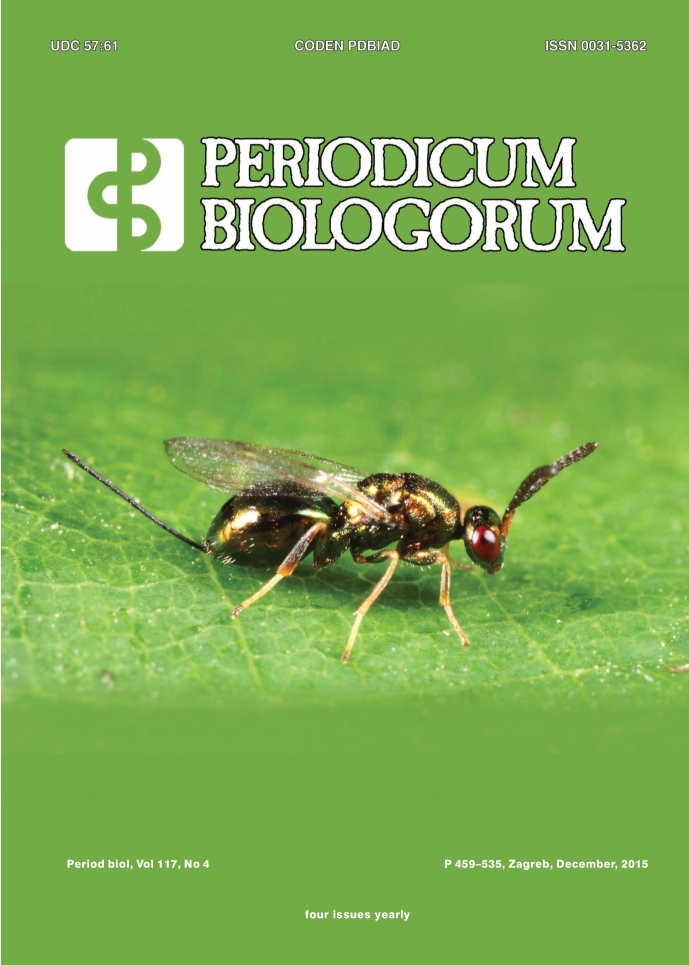The influence of crown defoliation on the variability of some physiological and morphological properties of Silver fir (Abies alba Mill.) seeds in the seed zone of Dinaric beech-fir forests in Croatia
DOI:
https://doi.org/10.18054/pb.v117i4.3428Abstract
Abstract
Background and Purpose: Negative anthropogenic influence on the environment became visible in the 1980s and the result was the emergence of forest degradation. Silver fir (Abies alba) is highly sensitive to atmospheric and pedospheric pollution and it is one of the most endangered tree species in the entire Europe. The aim of this research was to determine the influence of different levels of crown defoliation on the phenotypic variability between and within the populations of silver fir in the zone of Dinaric beech and fir forests.
Material and Methods: Within the area of silver fir forests in the Forest Administrations of Delnice, Senj and Split, permanent experimental plots were established in order to monitor the influence of different levels of crown defoliation on some properties of seeds: germination capacity, the percentage of fresh ungerminated seeds, rotten and decayed seeds, empty seeds and 1000 seed weight. Statistical analysis was carried out by parametric and non-parametric. Various models of variance analysis were carried out in the analysis of the variability of traits.
Results: The average germination capacity of silver fir seeds for the investigated area was 27.9 %, and ranged from 16.2 to 39.3 %. CV was high and indicated a great heterogeneity between the provenances. Average values of fresh ungerminated seeds were 12.6 %, and ranged from 9.1% to 19.6%. Average values of dead seeds were 16.1 % and ranged from 8.2 to 28.5%. The provenances from the area of Gorski kotar showed the largest portion of dead seeds, which was the area with the highest index of forest decline. The average value of empty seeds in the researched area was 43.4% and it ranged from 29.9% to 63.0%. CV ranged from 33.9% to 74.0% indicating a heterogeneity within the provenances. The share of empty seeds was influenced by the air pollution and the presence of insects on generative organs, and had a negative influence on the germination capacity. The average TSW in the researched area was 57.4 g and ranged from 49.4 g to 73.6 g. Duncan’s test confirmed the variability between the provenances for all investigated seed properties.
Conclusions: A statistically significant intrapopulation and interpopulation variability of physiological seed properties was determined in all studied provenances and the influence of different levels of crown defoliation on their variability was not determined. Considering the morphological properties of seeds, a statistically significant variability between the provenances and the levels of crown defoliation was determined as well as for the interaction of these two factors.
Downloads
Additional Files
- The influence of crown defoliation on the variability of some physiological and morphological properties of Silver fir (Abies alba Mill.) seeds in the seed zone of dinaric beech-fir forests in Croatia
- The influence of crown defoliation on the variability of some physiological and morphological properties of Silver fir (Abies alba Mill.) seeds in the seed zone of dinaric beech-fir forests in Croatia
- The influence of crown defoliation on the variability of some physiological and morphological properties of Silver fir (Abies alba Mill.) seeds in the seed zone of dinaric beech-fir forests in Croatia
- The influence of crown defoliation on the variability of some physiological and morphological properties of Silver fir (Abies alba Mill.) seeds in the seed zone of dinaric beech-fir forests in Croatia
- The influence of crown defoliation on the variability of some physiological and morphological properties of Silver fir (Abies alba Mill.) seeds in the seed zone of dinaric beech-fir forests in Croatia
- The influence of crown defoliation on the variability of some physiological and morphological properties of Silver fir (Abies alba Mill.) seeds in the seed zone of dinaric beech-fir forests in Croatia
- The influence of crown defoliation on the variability of some physiological and morphological properties of Silver fir (Abies alba Mill.) seeds in the seed zone of dinaric beech-fir forests in Croatia
- The influence of crown defoliation on the variability of some physiological and morphological properties of Silver fir (Abies alba Mill.) seeds in the seed zone of dinaric beech-fir forests in Croatia
- The influence of crown defoliation on the variability of some physiological and morphological properties of Silver fir (Abies alba Mill.) seeds in the seed zone of dinaric beech-fir forests in Croatia
- The influence of crown defoliation on the variability of some physiological and morphological properties of Silver fir (Abies alba Mill.) seeds in the seed zone of dinaric beech-fir forests in Croatia
- The influence of crown defoliation on the variability of some physiological and morphological properties of Silver fir (Abies alba Mill.) seeds in the seed zone of dinaric beech-fir forests in Croatia
Published
Issue
Section
License
The contents of PERIODICUM BIOLOGORUM may be reproduced without permission provided that credit is given to the journal. It is the author’s responsibility to obtain permission to reproduce illustrations, tables, etc. from other publications.


